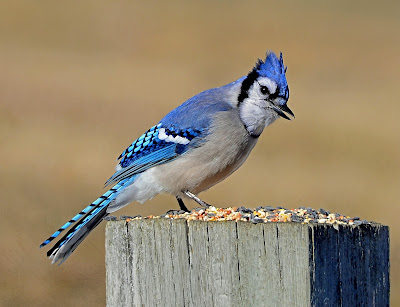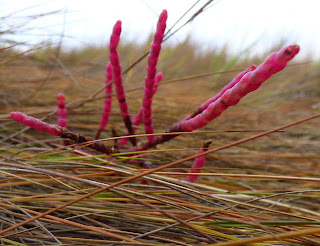Nature News
How a pitcherplant catches its dinner
by Sue Pike The York Weekly/Portsmouth Herald/Foster's Daily Democrat
 I experienced the exhalation of
nature last week. I was in a bog in Farmington NH, crouched down low over a patch
of brilliant scarlet and chartreuse pitcherplants, trying to take photos into
their water-filled orifices (yes we had just had rain for the first time in a
long time!) in the hopes of catching one of these carnivorous plants slowly
consuming some luckless insect. My
camera lens kept fogging up and I realized it was caused by condensation of the
water vapor evaporating out of the pitcherplant---not a true exhalation, but
something close.
I experienced the exhalation of
nature last week. I was in a bog in Farmington NH, crouched down low over a patch
of brilliant scarlet and chartreuse pitcherplants, trying to take photos into
their water-filled orifices (yes we had just had rain for the first time in a
long time!) in the hopes of catching one of these carnivorous plants slowly
consuming some luckless insect. My
camera lens kept fogging up and I realized it was caused by condensation of the
water vapor evaporating out of the pitcherplant---not a true exhalation, but
something close.Because of the drought I was able to walk out into the bog, much further than I normally would have without hip waders. While the soil still held enough water for the ground to be damp, it lacked its normal squishiness-the water level should be near the surface in most bogs, in the midst of a drought it is not (the term “bogged down” comes from that sensation of sinking up to one’s knees in a bog, hard to move while embedded in the muck).
This bog was covered with a thick
layer of sphagnum moss, a characteristic of most bogs. The sphagnum moss acidifies the environment
in which it lives, making it difficult for most plants to thrive—only hardy,
acid-tolerant plants can flourish, plants like blueberries, cranberries, cotton
grass and carnivorous pitcherplants. Pitcherplants were there in abundance,
nestled in amongst the cranberries and marsh grasses, splashes of color with
their bright green and red pitchers, sprouting flowers that nodded red and
yellow from tall, straight stalks
The only pitcherplant native to
New England is the purple pitcherplant (Sarracenia purpurea). Pitcherplants have hollow, pitcher-shaped
leaves (hence the name) that collect water and trap insects. The pitcherplant needs these insects to
provide nutrients that are unavailable in the acidic peat (partially decomposed
plant-rich soil of the bog). The inside
of the pitcher is lined with downward-facing hairs that help prevent prey from
climbing out of the pitcher (not too efficient though-it is thought that less
than one percent of flies that fall in are actually trapped). Once trapped, the insect eventually dies and
is broken down into usable nutrients by the host of insects and microorganisms
that live in the pitcher.
There are worlds within worlds in
these pitchers; “At least two insects also use
the pitchers as a breeding location. A community of microorganisms eventually
develops in the water at the base of the pitchers. These microorganisms live on
the nutrients of the decaying insects, and may actually increase the nutrients
available to the plant by further digesting its prey. The microorganisms are
themselves prey to at least two species of carnivorous insects – the larvae of
a mosquito and the larvae of a midge – which complete their life cycles in the
pitchers. For some reason, the digestive enzymes secreted by the plant affect
neither species.” (U.S. Forest Service).
The flower of the pitcherplant is
also unusual. The deep red color is
thought to attract pollinating flies by resembling raw meat. The round, enlarged ovary sprouts a
large, upside-down umbrella that acts as a landing platform for
pollinators. This landing platform is
surrounded by the pollen-producing anthers and because of this arrangement is
laden with pollen. In addition, the
ovary drips nectar onto the platform—pollinators land and walk around sucking
up the nectar and picking up pollen in the process.
Carnivorous
plants haunt our imaginations because, by relying upon prey (instead of
sunlight) for some of their energy needs, they represent a link between plants
and animals, they somehow feel (to me) like close cousins. I like to walk out onto a bog, see them there
lying in wait and say hi.





Comments
Post a Comment